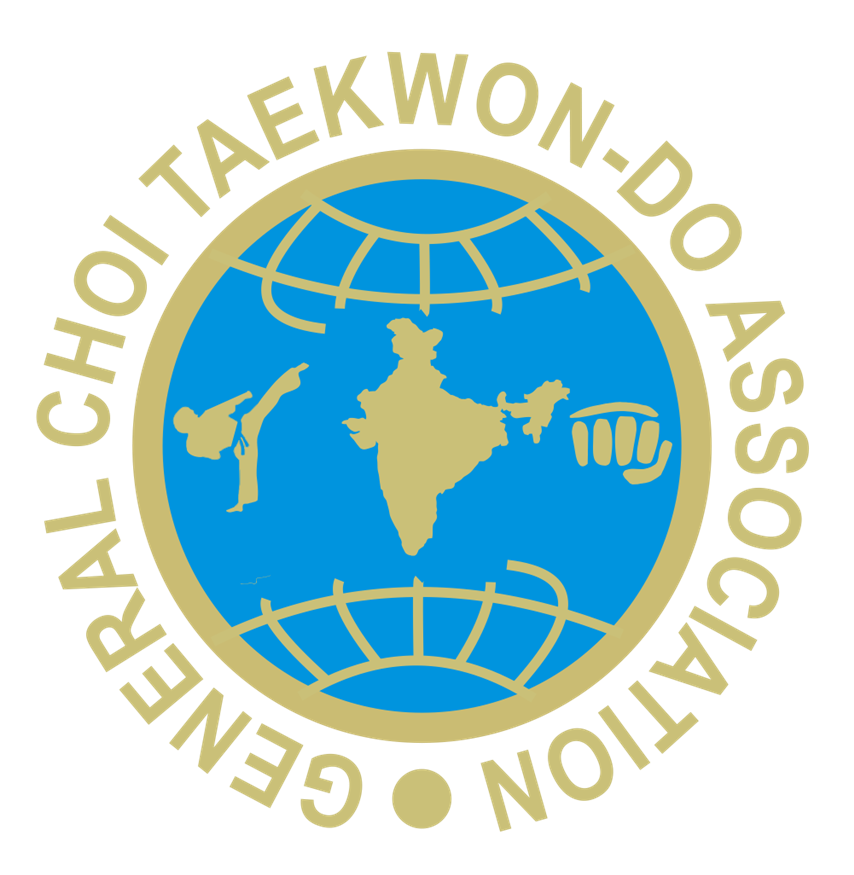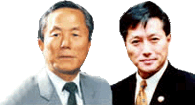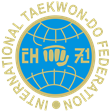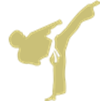Bodhidharma

Biography:
Bodhidharma
The evolution of Asian martial arts as they are known today is thought to have originated around 500 A.D., when an Indian Buddhist monk named Bodhidharma arrived in China. Legend has it that he taught Indian fighting exercises to the Chinese monks in order to improve their physical condition. All kung-fu is thought to have evolved from this beginning, and from kung-fu came karate.
The Bodhidharma legend has been examined in detail by Michael Spiesbach (“Bodhidharma: meditating monk, martial arts master or make-believe?” Journal of Asian Martial Arts, 1992, vol. 1, no. 4, p. 10-27). The question of Bodhidharma's actual contribution to the martial arts, and even of his very existence, has been the subject of controversy among martial arts historians for many years. Because he is such an important figure, we will review what is thought to be known about him in some detail:
The earliest historical reference to Bodhidharma is the Luoyang jia lan ji, (“The History of the Monasteries of Luoyang”) written by Yang Xuanzhi in 547 A.D. Yang claims to have personally visited the Yong Ning Temple and to have met there an old Persian “Barbarian” (foreigner) named Sramana Bodhidharma, who stated that he was 150 years old. The Buddhist scholar Guifeng Zongni (780-841) quoted an old Buddhist Koan (riddle) that asks, “Why did Bodhidharma come from the West?” Dao Zuan's Xu gao seng zhuan (“Biographies of Eminent Tang Monks”), written in 645, gives the earliest record of Bodhidharma's life. The second most important biography is Dao Yuan's Jing de zhuan deng lu (“The Records of Transmission of the Lamp”), compiled in 1004. Many writings have traditionally been credited to Bodhidharma himself, but current scholarly opinion maintains that none is authentic.
Mainstream Buddhist tradition holds that Bodhidharma arrived in China in 520, although there are historical indications that he may have arrived in 470, or even as early as 420. There is no agreement as to the route he traveled or where he arrived first. Some say he traveled by sea, “risking his life over the towering waves,” from Madras in southern India to Guangzhou and then by land to Nanjing. Other scholars believe that he walked a well-beaten trail over the Pamir Plateau, across the desert and along the Yellow River to Luoyang, the provincial capital and center of Chinese Buddhist culture. In any case, the journey from India is agreed to have been long and dangerous.
Bodhidharma is thought to have been born in Kanchipuram, near Madras, India, the third son of a local king and therefore a member of the caste of warriors and rulers. At the age of seven he purportedly began making observations of precocious wisdom (e.g. “The mind is a jewel”). His teacher, Prajnatara, changed the boy's name from Bodhitara to Bodhidharma. Following his father's death, Bodhidharma served Prajnatara for many years spreading Buddhism. Upon Prajnatara's death Bodhidharma left his monastery in India to follow his master's last wish that he go to China and spread the teaching.

Bodhidharma crossing the Yanstze Rover on a reed
Bodhidharma is said to have resided a while in the court of the Emperor Wu Dai (465-550), but left after deciding that the emperor was not sufficiently appreciative of his teaching. He traveled to the northern part of the province by crossing the Yangtze River (according to one version, by miraculously standing on a reed), arriving finally at Luoyang, an active center of Buddhist scholarship. There he made himself unpopular by asserting that the Buddhist scriptures were only a tool for achieving enlightenment and need not be studied indefinitely for their own sake. Hated, abused and slandered in Luoyang, he was forced to live by begging for food. He then traveled to Mount Song for a period of ascetic contemplation, and from there moved on finally to the Shaolin Temple in Henan Province. (Not to be confused with other Shaolin temples, such as the one in Fujian Province associated so closely with the origin of Okinawan karate in the 18th and 19th centuries). The temple, built in 495, was already a focal point for Indian Buddhist monks who came there to work at translating the Indian sutras into Chinese. He was not welcomed there either, however, so he took up “wall-gazing” meditation in a cave facing a high cliff opposite the Shaolin monastery. Legend says he meditated there in silence for nine years as a demonstration of the true reality of Buddhism. During this time he was approached by a Chinese monk named Shen Guang, who convinced Bodhidharma of his sincerity and was accepted as Bodhidharma's disciple and successor. There are many mutually incompatible stories of Bodhidharma's death and burial place.
According to what is apparently a mostly oral tradition, Bodhidharma initiated training programs at the Shaolin temple which related to martial arts. Bodhidharma taught his brand of dhyana meditation to monks at the temple, but found that they did not possess the necessary stamina. They were so weak that they tended to fall asleep during meditation lessons. In order to strengthen their “flaccid and emaciated bodies” he instituted calisthenics, breathing exercises and Indian fighting exercises. His emphasis was said to be the cultivation of intrinsic bioenergy (called ki in karate) through breath control. Bodhidharma is supposed to have been well versed in these techniques as a result of the training given all members of the Indian warrior caste in their youth. The famous Sanchin kata, incorporated today in over a dozen Okinawan karate styles, is often attributed directly to Bodhidharma. In the Uechi-ryu karate style, the goal of Sanchin practice is actually stated to be nothing less than enlightenment!
Another component of present-day karate attributed to Bodhidharma is the kiba dachi, or “horse stance,” which is used as a physical exercise as well as a meditation stance. Monks were originally expected to remain in the low horse stance while meditating for the length of time it took a stick of incense to burn, about one hour. The horse-stance has been called one of “Bodhidharma's Treasures.”
Disciplines and martial exercises instituted by Bodhidharma were supposedly transmitted orally for centuries, and were not actually written down until a thousand years later when the Yi Jin Jing (“Muscle-changing-Classic”), the Xi Sui Jing (“Marrow-cleansing Classic”), and the Shi Ba Luo Han Shou (“Eighteen Hand Movements of Luohan”) were composed. The “Muscle-changing Classic” consists of exercises for strengthening the “external” (arm and leg) muscles and also the “internal” (torso) muscles. After the “Muscle-changing Classic” was mastered, students were to move on to the “Marrow-cleansing Classic,” which was designed to clean the bone marrow and blood, strengthen the immune system, and energize the brain to facilitate enlightenment.
Bodhidharma (also known as Taishi Daruma in Japan) eventually became revered as the founder of Zen Buddhism. Whether his legends hold an element of truth, or are the products of later Zen scholars attempting to flesh out a believable patriarch, he remains today a prime symbol of the will-power, determination and self-discipline that are essential to success in the martial arts. Following his example, the modern martial artist strives to “endure what is most difficult to do, and practice what is most difficult to practice.” Bodhidharma's example of the Master-student relationship for teaching the way to enlightenment also endures today throughout the martial arts. Consequently, through the hard evidence for his existence and his martial arts contributions is entirely lacking, he is still widely and beneficially accepted as the Father of the Asian Martial Arts.





